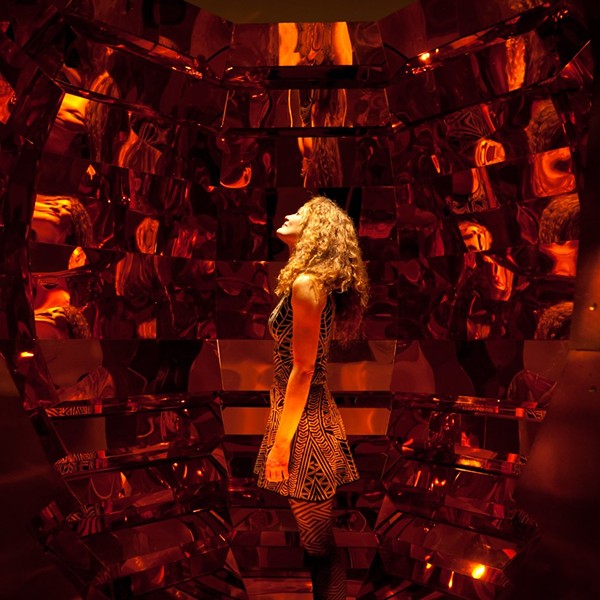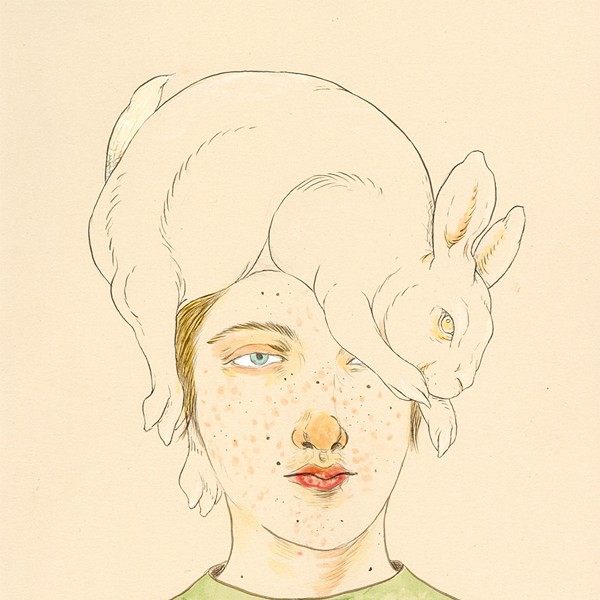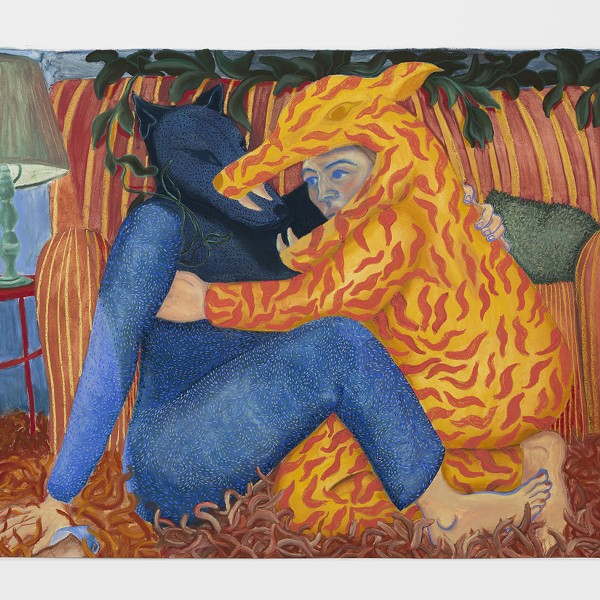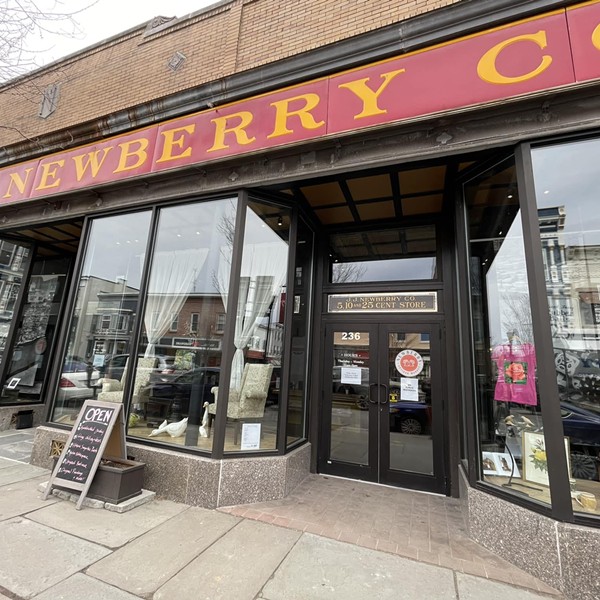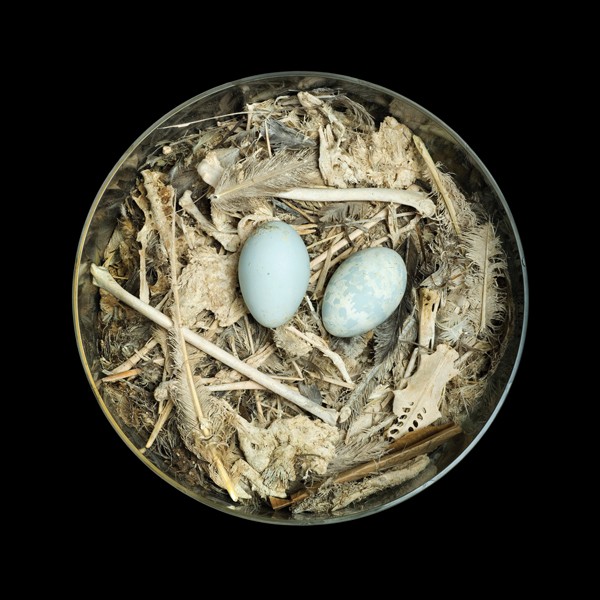
Why are there bird-watching societies and not squirrelwatching societies, or snake-watching clubs? The human compulsion to stare at feathered beings, and listen to their jazzlike music, is ancient. "The Nest: An Exhibition of Art in Nature" at the Katonah Museum of Art starting March 6, approaches nesting from several viewpoints: art, ornithology, archaeology, and personal bird obsession.
Sharon Beals photographs nests in scientific collections, with an eye for the absurd and the visually pleasing. In one photo, a house finch nest includes bits of plastic, cellophane, and discarded fabric (plus four eggs!). The effect is whimsical, chaotic, and cheerful, like a skillfully curated pile of trash. Judy Pfaff's large installation Time Is Another River, combining cardboard, foam, and plastic into a festive nestlike oval, shows a strong house finch influence.
This exhibition questions our very definition of art. When a bird chooses a pretty ribbon to add to her nest, is that an aesthetic decision or simply an "instinct"? (And perhaps our compulsion to make art is also "instinct"?)
Contemporary art has incorporated scientific artifacts at least since Damien Hirst's The Physical Impossibility of Death in the Mind of Someone Living (1991), an installation with an actual shark in formaldehyde. "Nest" offers bird nests on loan from the Peabody Museum of Natural History at Yale University, including works by horneros, weaverbirds, and eider ducks. South African designer Porky Hefer creates human-size nests using the methods of weaverbirds. Nest Sculpture is a rounded womblike capsule hanging from jute ropes. (It's possible that humans learned to weave by copying weaverbirds.)
The show features a collection of pre-Colombian feathered garments from Peru, the oldest dating from 300 CE: a tunic, three loincloths, and a ceremonial headdress. "The visual parallels between these textiles and much of contemporary art is astonishing," remarks associate curator Elizabeth Rooklidge. "Each of them is totally abstract, and the color contrasts are deeply considered." Plus it's mind-boggling to gaze at an artifact made of feathers that's lasted 1,700 years!
Walton Ford's neo-Victorian paintings are tributes to 19th-century scientific illustration. Tale of Johnny Nutkin is an etching centered on an agitated owl protecting her nest from nine rapacious squirrels. The bird majestically fans its left wing to fend off the mammalian intruders. Kiki Smith's tapestry Guide shows two bald eagles rising effortlessly above a seashore. Birds are often metaphors for human types. A person may be "proud as a peacock," "hawk-eyed," "dovelike." (Full disclosure: I myself am a bird metaphor, or at least my name is.)
There are a number of political works in the show. Fiona Hall is an Australian artist who makes realistic-looking nests out of shredded American dollar bills, suggesting a pun on the phrase "nest egg." Sanford Biggers, an African-American artist originally from South Central LA, creates "ghetto bird tunics," jackets covered with feathers that offer spiritual protection against LAPD surveillance helicopters, which are known as "ghetto birds." The jacket in this show is baby-sized. A black-and-white photograph by heroic East Village AIDS activist David Wojnarowicz shows two soiled, bandaged hands, one of which cradles a nest. Even this quintessentially urban artist found consolation in a bird home.
Bird-watching has adapted to the Internet age. "Bird-cams" allow curious humans to observe birds 24 hours a day (and also hear them), usually while the subjects are nesting. These reality TV shows often resemble an avian version of "Waiting for Godot." "The Nest" will include bird-cam monitors.
"The Nest, An Exhibition of Art in Nature" will be at the Katonah Museum of Art March 6 though June 19. (914) 232-9555; Katonahmuseum.org










